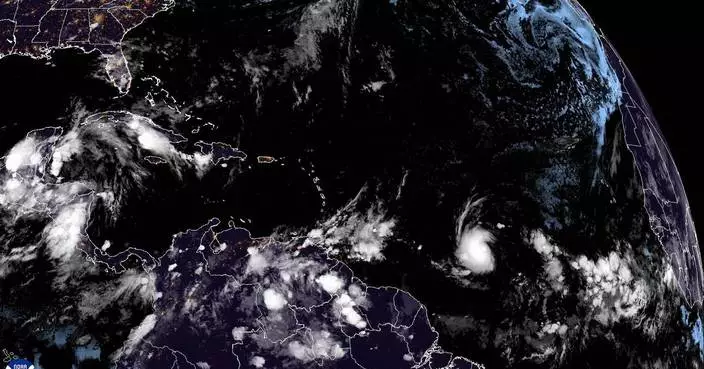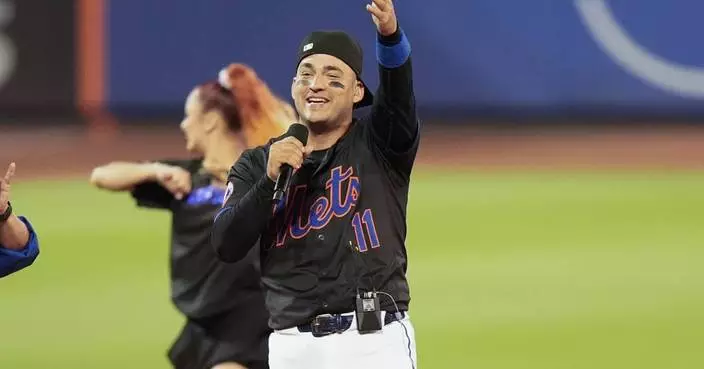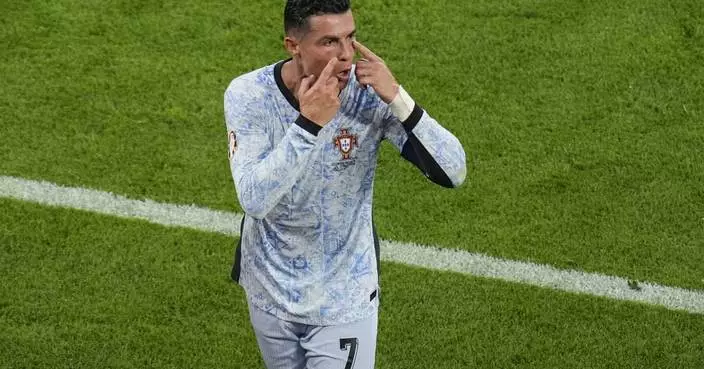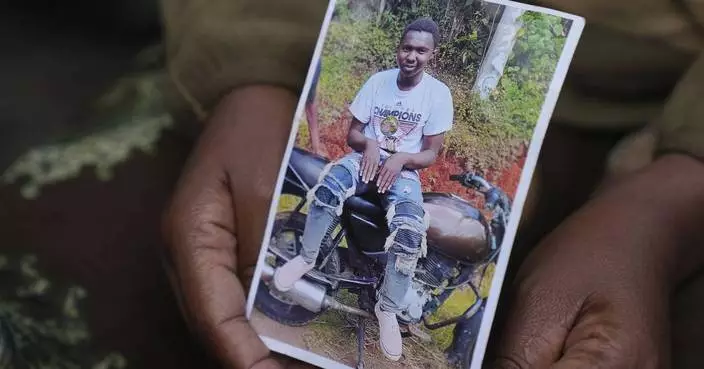BAMAKO, Mali (AP) — Opposition politicians who were arrested in a crackdown in Mali were sent to prisons across the country this week, their families said, in a move rights groups decried as another step back for the country where the ruling junta has suspended all political activities.
Mali, a landlocked nation in the semiarid region of Sahel, has been embroiled in political instability that swept across West and Central Africa over the last decade. The nation has seen two military coups since 2020 as an insurgency by jihadi groups linked to al-Qaida and the Islamic State group worsened. The junta has ruled the country with an iron fist, and earlier this year suspended all political activities.
The eleven opposition politicians were arrested earlier this month during a meeting in a private residence, the Malian National Human Rights Commission, a government agency, said in a statement, denouncing what it called “arbitrary arrests” and “violations of private homes."
A family member of one the detainees said Wednesday that they were divided into two groups, one sent to Koulikoro prison, 60 kilometers (37 miles) from Bamako, and the other to a new prison 70 kilometers (43 miles) from Bamako. The family member spoke on condition of anonymity for fear of repercussions from authorities.
The dissidents are held on charges of attacks and conspiracy against the government, opposition to legitimate authority and breach of public order, but they haven't been tried yet, a judicial official said.
Ousmane Diallo, Dakar-based researcher on the Sahel region at Amnesty International, a rights group, said the arrests demonstrated “the pattern of abuse of civil and political rights" in Mali since February.
“We denounce the crackdown on the opposition politicians in Mali, the dissolution of political parties and suspension of all political activities,” Diallo said. “We denounce how the security and intelligence services and sheer force have been used to clamp down on any possibility for Malian citizens to share their political views."
In April, the junta issued a decree suspending all activities by political parties and “associations of political nature” in the name of maintaining public order. The political parties appealed the decision to the Supreme Court, but it is not clear when the appeal would be considered.
It's becoming increasingly perilous to express dissatisfaction with the Malian authorities, experts said, with those who dare to speak out risk being arrested or kidnapped. Journalists and activists have also disappeared, only to return later, while many media correspondents have left Mali because they were not allowed to work.
The junta is driving the country toward “a political impasse,” said Alioune Tine, the founder of the AfrikaJom Center, a research organization and U.N. expert on human rights in Mali. “The complex security crisis can be resolved by bringing Malians together, respecting political and democratic pluralism, but not by the dogmatic use of repression against all political dissent.”
Earlier this month, a coalition of political parties opposed to the junta, Appel du 31 Mars, called on citizens to demonstrate against the shortage of electricity in Bamako and the high living costs, and to demand a return of constitutional order.
Only one person showed up to cover the event — Yeri Bocoum, a young social media activist.
The next day, Bocoum wrote on Facebook that he was being followed by unidentified men and threatened. A day later, on June 8, as he was leaving his house in the city of Kati, the junta's stronghold, he was kidnapped.
“He left his house at 2 p.m. on June 8, and a few hundred meters away, armed men arrested him and asked local people watching the scene to go back into their homes and close their doors," his sister, Kadidia Bocoum, told The Associated Press. “The men who kidnapped him took him and his car away."
The family reached out to the authorities but has not heard from him since, Bocoum said.
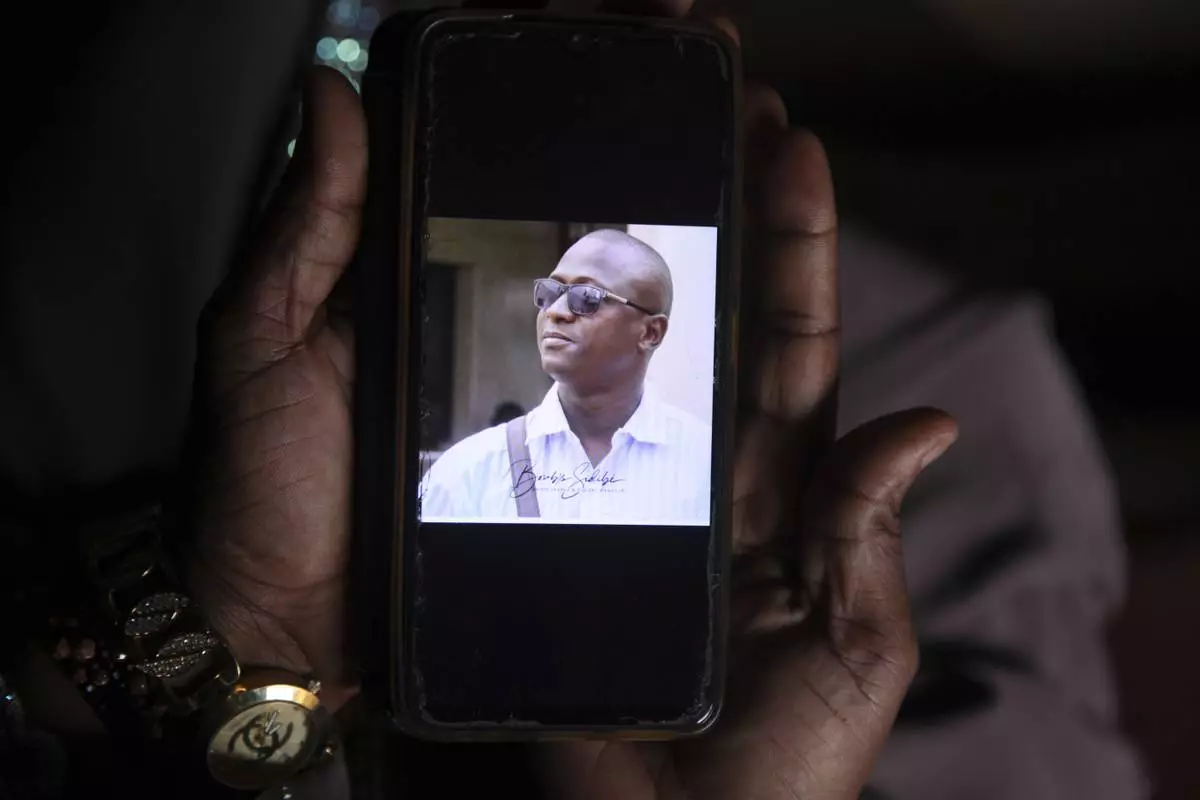
Kadidia Bocoum shows a picture of her brother Yeri Bocoum, a Malian journalist who was kidnapped by what is suspected to be state security forces after covering a march against Mali's electricity crisis, in Bamako, Mali, Bamako, Tuesday, June 25, 2024. Opposition politicians who were arrested in a crackdown in Mali were sent to prisons across the country this week, their families said, in a move rights groups decried as another step back for the country where the ruling junta has suspended all political activities. (AP Photo/Baba Ahmed)
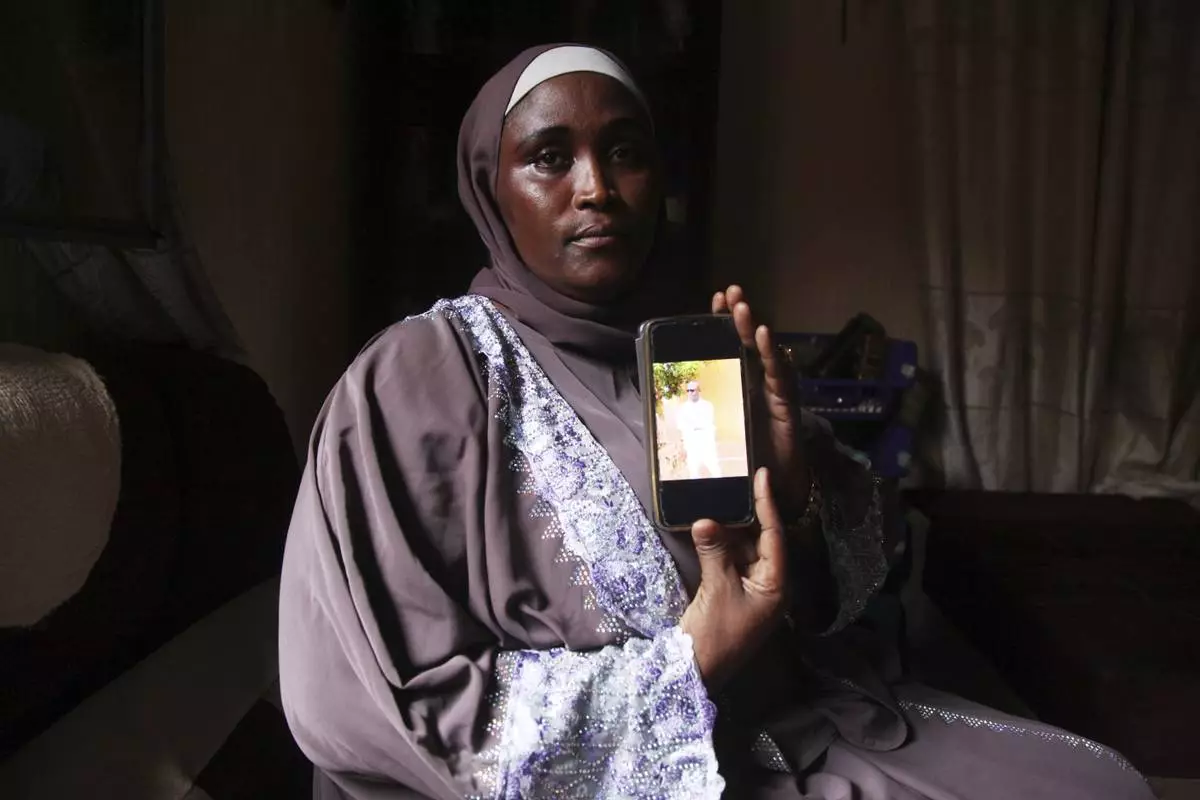
Kadidia Bocoum shows a picture of her brother Yeri Bocoum, a Malian journalist who was kidnapped by what is suspected to be state security forces after covering a march against Mali's electricity crisis, in Bamako, Mali, Bamako, Tuesday, June 25, 2024. Opposition politicians who were arrested in a crackdown in Mali were sent to prisons across the country this week, their families said, in a move rights groups decried as another step back for the country where the ruling junta has suspended all political activities. (AP Photo/Baba Ahmed)
FORT LAUDERDALE, Fla. (AP) — With school out for the summer and temperatures rising across the country, many families will visit the beach, lake or local swimming pool. Now is the time to review safety tips to keep children safe around water.
Drowning is the leading cause of death for children ages 1 to 4 and the second leading cause of unintentional death for children in the 5 to 14 age group, according to the Centers for Disease Control and Prevention.
In the United States, 973 children under the age of 19 drowned in 2021, and another 6,500 were treated in emergency rooms following near drowning incidents, according to Gary Karton of Safe Kids Worldwide, a nonprofit organization working to prevent childhood injury.
In fact, more drownings occur in the summer, and specifically in July, than any other time of the year, according to the Children's Hospital of Pittsburgh.
Palm Beach County Ocean Rescue lifeguard Daniel Barnickel said there always should be an adult monitoring the water.
“As a whole, never swim alone," he said.
Taking the time to go over safety procedures and rules before heading to the pool or beach can benefit children and their parents.
The most important safety feature of a backyard swimming pool is a barrier, such as a safety fence, to prevent unsupervised access to the water.
Many children who drowned at home did so during times they were not expected to be in the water, according to the American Red Cross. In some cases, children were out of sight for less than five minutes and in the care of one or both parents when they slipped into the pool and drowned, the agency said.
That said, it is vital to make sure children learn to swim. There are many programs that teach children to swim, including Red Cross swimming courses across the U.S.
If a child goes missing, remember that seconds count. Check the water first, safety experts advise. It's also important to have appropriate equipment available at home. This includes something to throw into the water for a child to grab onto, a cell phone to call for help, life jackets and a first aid kit.
All children should learn to step or jump into water that's above their head and safely return to the surface and also be able to float or tread water, according to Safe Kids Worldwide.
They should also be able to quickly turn around in the water and find a safe place, combine breathing with moving forward in the water and get out of the water.
If several adults are at the pool, beach or lake with a group of children, choose a water watcher who can have eyes on the children at all times. It's a great idea to rotate the water watcher among the adults for brief amounts of time, such as 15-minute intervals, experts at Safe Kids Worldwide recommend.
While at the pool or around water, it's advisable to avoid distractions. Put away phones, books and magazines, because drowning is often silent and can happen in less than five minutes.
When you're finished swimming, make sure to remove all floats and pool toys so young children won't be enticed to reach for them.
Teach children to stay away from pool drains or suction devices, which can entrap swimmers' hair or limbs.
Since 2014, all public pools and spas in the U.S. have been required to comply with the Virginia Graeme Baker Pool & Spa Safety Act, which was named after a 7-year-old girl who died after being caught by the strong suction of a hot tub drain in 2002. Her mother lobbied Congress to require drain covers and other pool safety features.
But even with those safety elements, experts say it’s a good practice to check the drains and devices before children get into a pool.
Always swim with a buddy, or in an area supervised by a lifeguard.
“Make sure that you don’t overestimate your abilities,” Barnickel said. “Know your limits.”
Have young or inexperienced children wear U.S. Coast Guard-approved life jackets. The size of the life jacket should be based on the child's height and weight. Never substitute arm floaties or inflatable swimming rings for life jackets.
The best practice is to keep children within an arm's reach of an adult at all times when in the water and teach them to always ask permission to go near the water.
Enforce safety rules, including no running or pushing on the pool deck and no dunking people in the water. It's also a good idea to keep them from chewing gum or eating while swimming or jumping in the water.
Experts also recommend making sure children know the depth of the water so they don't dive into the shallow end and get injured.
Open water, such as the ocean or a lake, is much different than a backyard swimming pool.
Children need to understand there can be limited visibility and uneven surfaces in the ocean and lakes. They also need to be taught about currents and undertow, which can pull them under water and away from the shore.
“Year after year in South Florida, rip currents claim more lives than every weather-related hazard combined,” Barnickel said. “We’ve seen locals come here that have been going to the beach their whole life, and they’ve never been caught in a rip current, or they think that they have and they know what to do. And they’ll get pulled out into a rip current. We’ll go out and get them, and they say, ‘I can’t believe that happened.’"
When at a beach or lake, it's important to use designated swimming or recreational areas. Watch for signs posted about water hazards, as well as the times that lifeguards will be present.
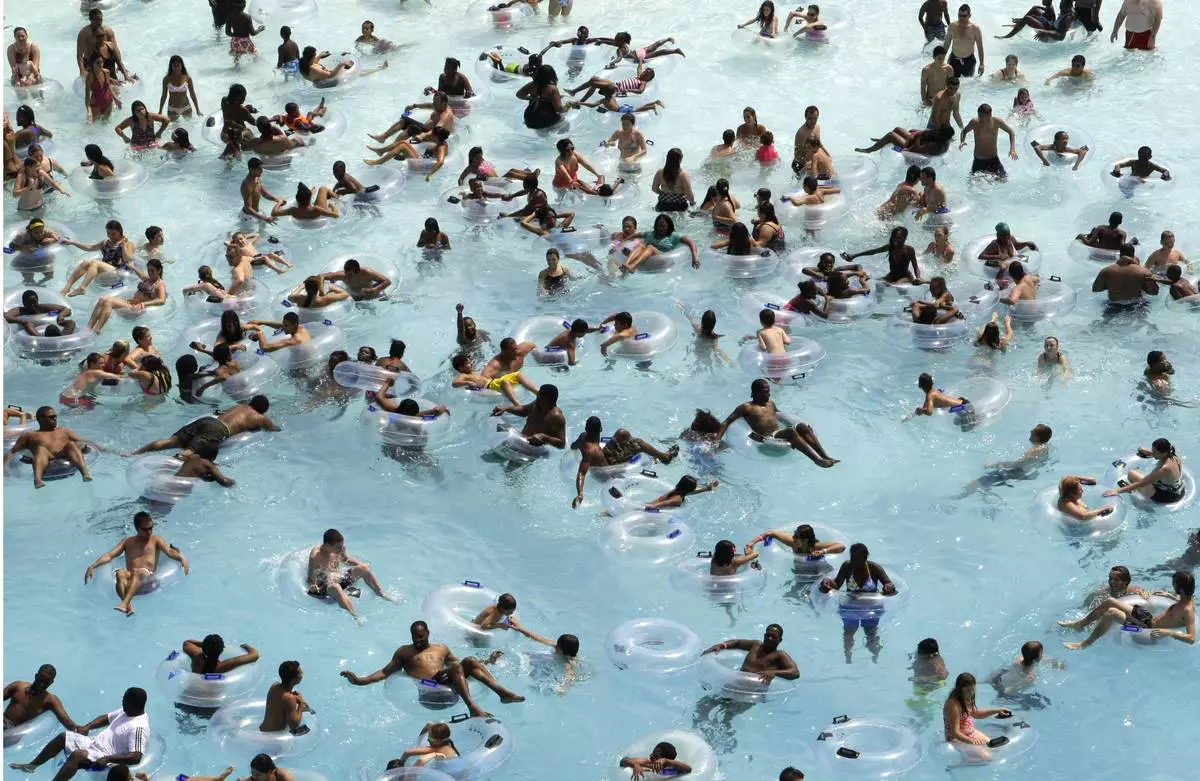
FILE - Swimmers try to stay cool in near 100 degree temperatures at Red Oaks Waterpark in Madison Heights, Mich., June 28, 2012. The Centers for Disease Control and Prevention says drowning is the leading cause of death for children ages 1 to 4. It's also the second leading cause of unintentional death for those ages 5 to 14. (AP Photo/Paul Sancya, File)







